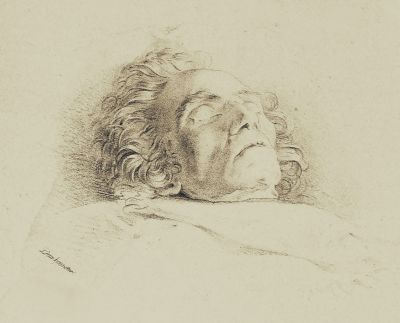ORCHESTRA
Grosse Fuge: Armageddon or the birth of atonality featured in Beethoven’s last major work

Lithograph of Beethoven on his deathbed by Josef Danhauser
The Grosse Fuge is one of Beethoven’s most controversial works which he finished shortly before his death while being in a state of severe melancholia brought upon almost complete deafness and other ailments that overshadowed his later years. Originally conceived by the composer as the final movement of his Quartet No. 13 in B♭ major, the piece contrasted so sharply with the other movements that the publisher was afraid to release the quartet in this edition and asked Beethoven to replace the fugue with a new finale.
Held in 1826, the premiere of the fugue as a quartet finale plunged the audience into an emotional storm while reviewers did not skimp on colorful epithets like "incomprehensible, like Chinese," "a confusion of Babel," and "Armageddon." Over the next two hundred years, Beethoven's Great Fugue was constantly subjected to rigorous analysis which gradually shifted the perception of its music and eventually granted it the status of "the most astonishing piece in musical literature".
Despite the contemporary criticism, Beethoven himself did not doubt the value of his Grand Fugue, as evidenced by his commentary on the audience’s reaction to the premiere of his thirteenth quartet. According to the violinist who participated in the performance and who brought the news that the audience had demanded encores of two middle movements, Beethoven growled, "And why didn't they encore the Fugue? That alone should have been repeated! Cattle! Asses!"
Listen to the orchestral version of Beethoven's Grosse Fuge performed by Herbert von Karajan with Berliner Philharmoniker:
Going against his usual stubborn self, Beethoven spent only one day to deliberate upon the publisher's offer to withdraw the fugue from the publication of the quartet and print it as a separate work. The most likely reason for this was the maestro's difficult financial situation or simply because he came to feel the fugue stood best on its own.
In late 1826, Beethoven completed a new movement that replaced the fugue in the string quartet which is considered to be the last complete piece of music written by him. Both works the Quartet No. 13 in B♭ major Op. 130 and the Große Fuge separately as Op. 133 were published shortly after the composer's death in 1827.
Listen to the Beethoven's Grosse Fuge performed by Amadeus Quartet:
Only a hundred years after the publication, the Grosse Fuge became a common part of the repertoire of string ensembles as well as an object of close study by new generation composers who were looking for fresh musical aesthetics capable of expressing modern trends of the turbulent 20th century.
Some musicologists are inclined to consider the main theme of the fugue, featuring a chromatic motif of eight notes, as the precursor of atonality and twelve-tone serialism—the main techniques of the so-called second Viennese school that determined the development of modernism and avant-garde in classical music.




Some say that the late quartets are the work of a deaf man, but I think that's being way too simplistic.